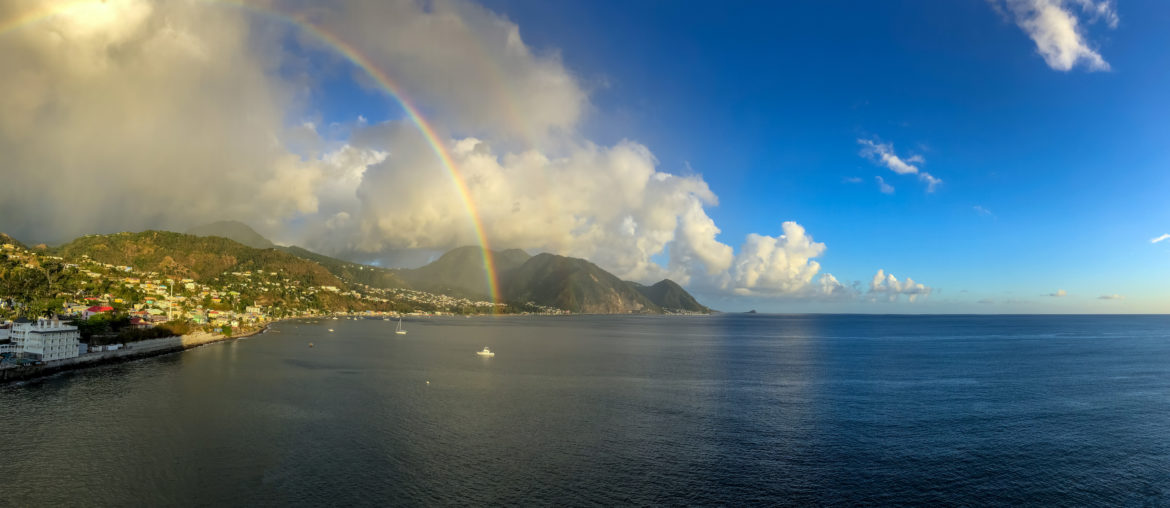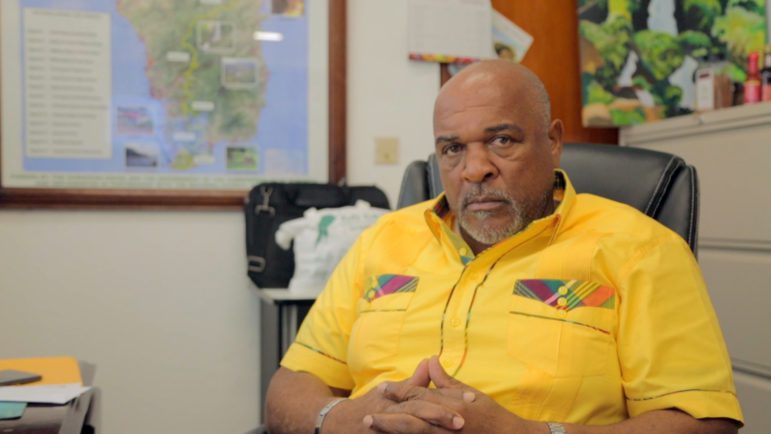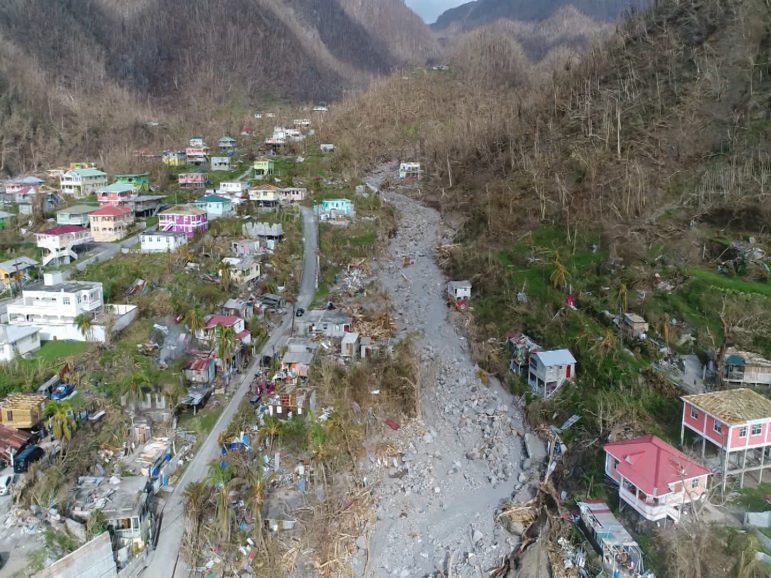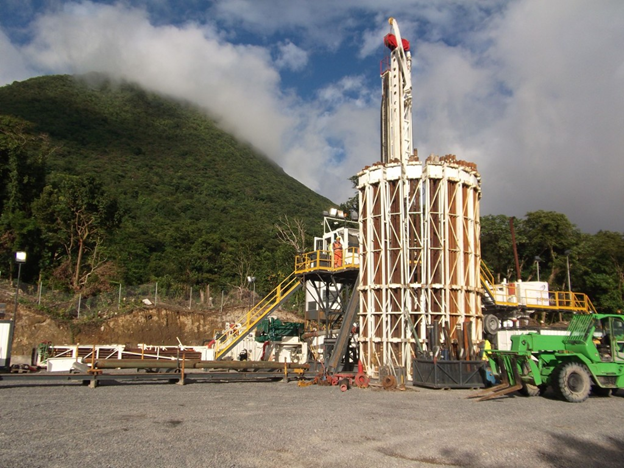PetroCaribe Country Report: Dominica
By DALE ELLIOTT From CIJN

With A Little Help From My Friends — How a Tiny Island Weathered Hurricanes and Storms of Political Controversy
In March 2015, at a PetroCaribe Summit, Venezuelan President Nicolas Maduro reaffirmed his commitment to the 17 participating Caribbean and Latin American countries, even calling for greater socio-economic development and more integration among its members.
Fast forward just three years later and the entire framework has collapsed.
It wasn’t hard to see it coming.
After riding on a crest of US$ 100+ for 4 years, oil prices would plummet in 2014 and would come to rest at US$40 two years later before recovery. Aging infrastructure and poor management would cripple the oil output of neighboring Venezuela. Both were the very lifeblood of PetroCaribe.
The program was designed to pump oil at market prices to Venezuela’s neighbors but with a lucrative repayment plan that empowered political leaders with social spending beyond their former means. In return, Caracas expected it would enjoy political cover from all those sharing the riches.
While PetroCaribe clung to dear life, the oil in its veins was quickly running dry. The tankers, once a regular sight on the shores of Dominica, Antigua and St Vincent, are now but a memory. The development financing in the form of soft loans, disguised as deferred payments, ground to a predicted halt.
Reginald Austrie, the Deputy Prime Minister of Dominica with direct responsibility for PetroCaribe, is still a believer.
PetroCaribe is still very much alive in Dominica. We continue to support some of the institutions that PetroCaribe was designed to support, we still give out free cooking gas to our centenarians and we are still able to maintain the cost of PetroCaribe LPG below the price you would find on the national and regional market.

Today, PetroCaribe is truly a fragment of its former self. This is particularly troubling for Dominica because its Prime Minister was one of the original architects.
Minister Austrie recounts the early days with a proud smile,
It was an initiative designed by President Chavez and our own Prime Minister Roosevelt Skerrit. At the time, there were some very serious oil prices fluctuations, the oil crisis would have a very serious impact on the economies of small countries like Dominica. These noble gentlemen thought of the idea that to cushion the impact of the increase in the oil prices they wanted to enter into special arrangement, whereby they would be able to create a sort of opportunity to give us petroleum products at a reduced rate. But the fact that Venezuela was at the time a member of OPEC, we had to stick to the existing arrangements of OPEC, so what they decided to do was to give us deferred payments.
He paused, and sunk further into his chair in a mode of reflection, as he conjoined these words:
“Our Roosevelt Skerrit could be considered the political son of Chavez. It was Skerrit, who encouraged Chavez to extend that relationship that he was building in Dominica” to other Caribbean nations “because we are one region.”
In 2005, Domenica imported 177,450 barrels of gas and diesel oils. At the time, all purchases of petroleum products were on a “cash on delivery” basis.
By 2007, the deferred payment arrangements were in effect and Dominica’s oil imports surged by 39%. The more PetroCaribe oil you received, the greater benefit from the financing scheme. The island’s lone power company was the main beneficiary of the subsidized oil.
Countries like Haiti and Jamaica imported gasoline and diesel to fuel their transportation sectors. In contrast, Dominica, Antigua and St Vincent & The Grenadines (SVG), relied on PetroCaribe for their lone power companies. Liquefied petroleum gas was imported in all three countries under the arrangement and sold at a significantly reduced rate.
Dominica took this initiative a tiny step further by providing select senior citizens free cooking gas.
But critics said other social programs didn’t just help the less fortunate but seemed to benefit the “party faithful” with PetroCaribe funded handouts.
Austrie came to the defense of his government by listing a barrel load of projects undertaken with PetroCaribe funding:
“Housing was a major achievement. Under that project we were able to embark on a housing revolution, where we actually build homes for less fortunate, free of charge. And, the resources from PetroCaribe went to a number of other activities, ranging from infrastructure to social to environmental were funded from the initiative.”
Dominica’s aviation was in blackout past 6 P.M., because of the terrain and lack of adequate lighting. All flights were grounded at dusk. With the injection of soft loans from Venezuela, mountains were chiseled, an airport was rebuilt, and Dominica saw economic gains.
Storms Bring Devastation but PetroCaribe and Venezuela Bring Help

In 2009, Tropical Storm Erika plunged the country into $482.8 million of debt. PetroCaribe funds were there to resuscitate the social and economic recovery of Dominica’s 75,000 residents.
The country also underwent a groundbreaking housing development with thousands of low-cost houses and the financing mechanism to allow citizens to benefit, thanks again to PetroCaribe financing.
Dominica was not alone, in St Vincent for example, in 2018, the government of Venezuela wrote off approximately 30 million dollars owed by the SVG government for petroleum products. It also forgave another 29-million-dollar loan granted through the Bank of the Bolivarian Alliance for the Peoples of Our America (ALBA).
In 2017, the roulette of the Atlantic hurricane season took aim at Dominica again. This time, no part of the country was spared. Maria, a category 5 monster, killed 65 Dominicans. The hurricane wiped out communication, agricultural, transportation and physical infrastructure and left the island US$1.3 Billion in debt. That was a staggering 226 percent of Dominica’s 2016 GDP.
The generosity of the Nicholas Maduro government came like manna from heaven. With the stroke of a pen, Venezuela forgave Dominica more than US$100 million of debt. Was this brotherhood and solidarity at its best or was it something else?
Storms of Controversy Amid Regional Politics
Only 3 months earlier, Dominica joined two other, tiny Petrocaribe members (St. Kitts and Nevis and St. Vincent and the Grenadines) to thwart a strong resolution in the Organization of American States that aimed to condemn the Maduro government. The OAS wanted to force Venezuela’s left-wing leaders to abandon plans to adopt a Cuban-styled constitution. It failed to gain the necessary votes.
Critics howled that three tiny Caribbean states with a combined population less than a quarter of a million had blocked a measure supported by the U.S., Canada, Mexico, Brazil, Argentina and more than a dozen other nations.
Somewhere, Hugo Chavez was smiling.
The PetroCaribe Minister of Dominica attests to his country’s solidarity with Venezuela and its open support for it in all international spheres. But he strongly denies any payoff for political cover.
In Dominica, we vote with our conscience, we vote on principle. We vote with what we believe to be right and just… So, our vote to Venezuela was not because we are part of the PetroCaribe arrangement. We believe that Venezuela has been, and continues to be treated unfairly. We believe that the people of Venezuela have a right to self-determination. We believe that the people of Venezuela have the right to enjoy the resources that the good Lord has given to them. We believe that the people of Venezuela have a right to choose and to determine a government of their choice!
While it appeared that with the expansion of the fuel storage facilities at Gimmit in Dominica, the government was deepening its dependence on black gold, the Skerrit administration was simultaneously working on alternative forms of energy.
According to the World Bank, Dominica has a small power system that relies heavily on diesel to produce electricity.
The average price of electricity on the island is among the highest in the world, around US$33 cents/kWh as of December 2016 and customers are exposed to the volatility of international oil prices. Geothermal is more cost-efficient, climate resilient and greener.
Following Hurricane Maria in September 2017, 75 percent of the power network was damaged, leaving the whole island with no electricity. In response, the government adopted the National Resilient Development Strategy, which sets Dominica’s vision to become “the first climate-resilient country in the world.”
Diversifying the energy mix is a key element of this strategy. The World Bank approved a US$27 million project to support the construction of a seven MW geothermal power plant near the capital which can furnish electricity to 90% of the population. It is part of a larger plan that is expected to spur private sector investment in geothermal development.

This could not have come at a better time. Chavez and Maduro’s oil initiative, though it may have been well intentioned, was fraught with challenges unforeseen when eyes were blinded by those US$100 oil prices and strong Venezuelan crude production.
Today much of what Venezuela can produce is being shipped to China or Russia to repay a mountain of debt estimated at more than US$100 Billion.
The US sanctions further strangled the diplomatic and financial prospects of the initiative but Minister Austrie remains optimistic:
We hoping that this embargo will not last very long. And, we think that it is very unfortunate that this embargo had to be imposed on Venezuela…we think it’s inhumane and it’s cruel to punish a people because, of somebody’s political preference and political ideology. So, we are calling on the powers that are, to restore and remove this embargo on Venezuela, so the people can get their medicine, and they can get their food, and they can go about their normal daily lives.
Fourteen years after it all started, politicians in Dominica are eager to tell of all the social projects PetroCaribe made possible. They are less inclined to discuss how it may have benefited their own political fortunes.
U.S. sanctions are a reality. Venezuela’s domestic political crisis and its inability to continue shipments of oil to even the smallest islands is also a fact. Petrocaribe is gone and chances of it returning is mist on the horizon.
But there is another reality.
Dominicans celebrate Hugo Chavez as a blessed benefactor with murals all over the country paying homage to his generosity. On this island, PetroCaribe’s legacy is very much in the eyes, pocketbooks and politics of its beholders.
Click here to read the rest of the PetroCaribe investigative article.
SOURCE: https://www.cijn.org/petrocaribe-country-report-dominica/





